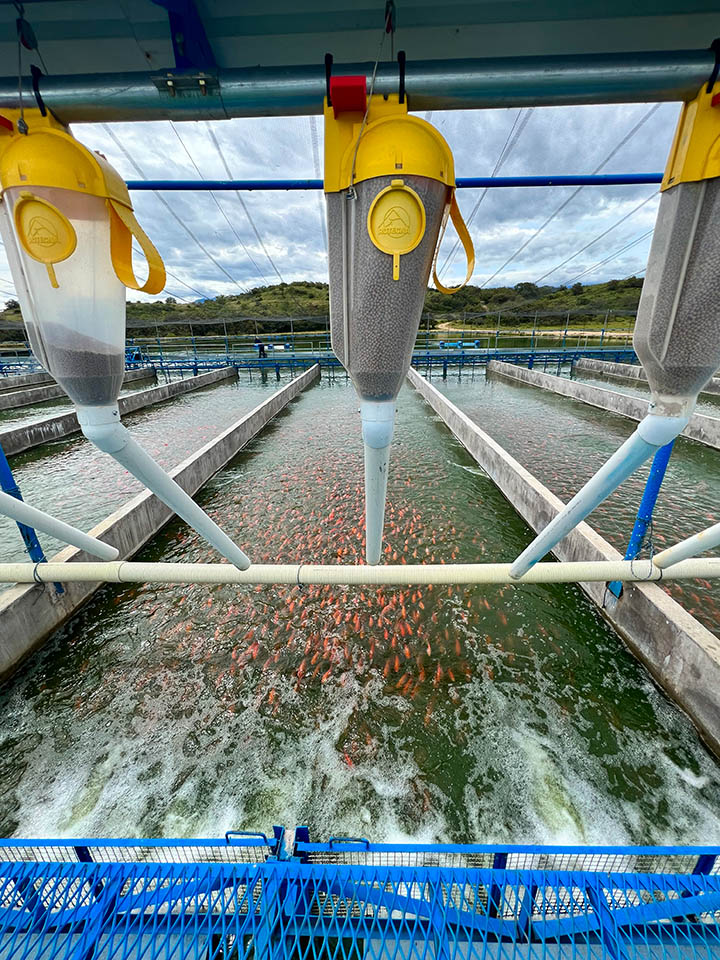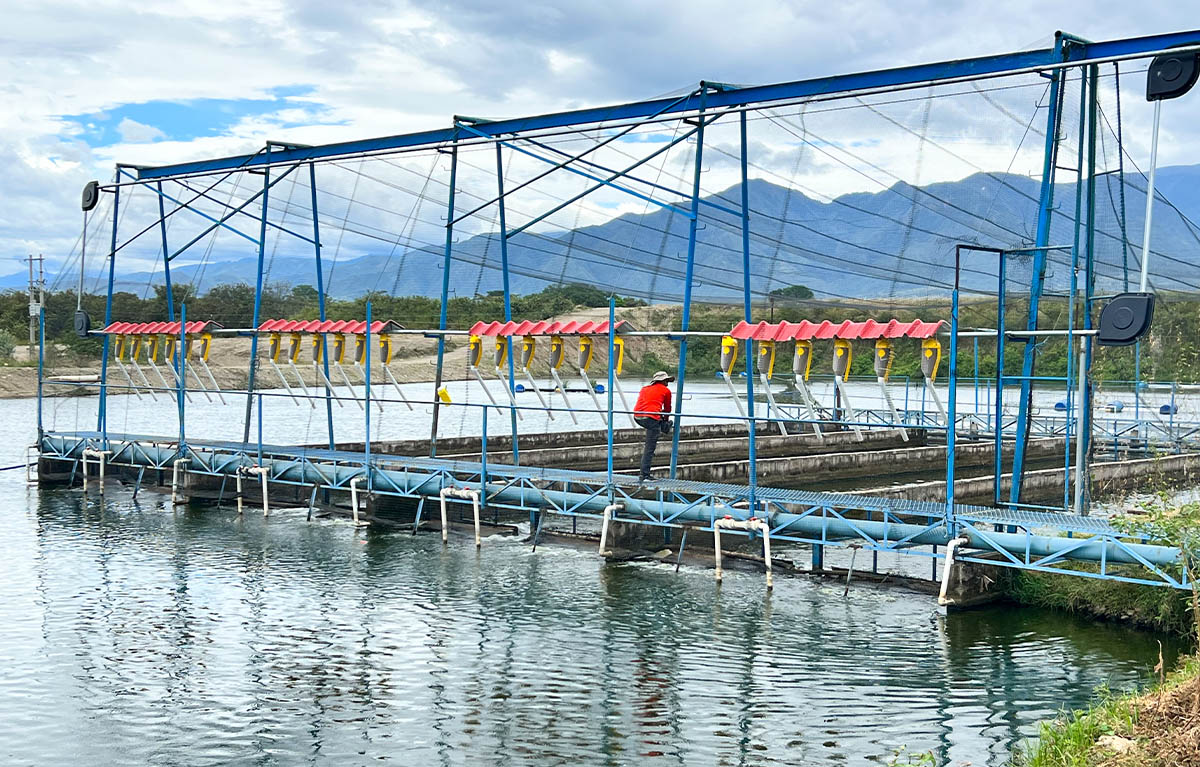Pioneering Colombia’s IPRS tilapia farms
June 8, 2023
Editor’s note: Easton Kuboushek was recently named as one of 10 Nuffield International Farming Scholars for 2023. The designation allows Kuboushek, the executive director of the Soy Aquaculture Alliance, to travel around the world on behalf of Iowa farmers and U.S. aquaculture where he will explore success stories, best practices, technology and regulations that have created huge growth in aquaculture production around the world. This is his latest report from Colombia.
Nestled among the Andes mountains between the rocky roads and rice paddies are patchwork man-made levees and irrigation canals. For generations, farmers have routed water from the rivers of the Huila region to fill ponds and supply Colombia with fresh, local fish.
But in recent years, there has been a shift. Colombia has more than doubled its aquaculture production — producing 192.5 million metric tons in 2021. This success story, both for the farmers in Colombia and the U.S. soy they feed their fish, can be credited to a few pioneers and their embrace of change.

Recently, I had the unique opportunity to meet these pioneers in person on behalf of Soy Aquaculture Alliance and Nuffield Farming Scholarships Trust. Our cohort, organized by the U.S. Soybean Export Council (USSEC) included Jairo Amézquita and Dr. Jesse Chappell, visited a dozen tilapia producers, feed suppliers and processors to educate farmers and make recommendations to improve their operations.
The Success of IPRS in Colombia
In the early 2000s, Chappell began testing a concept for a new intensive aquaculture production system that improved efficiency, sustainability and the overall health of the fish from fry to filet. The concept, oversimplified, is a "river in a pond" that routes through raceways or channels where fish are cultured and came to be known as the In-Pond Raceway System (IPRS).
Pilots of Chappell's invention were built to demonstrate the advantages of the system in comparison to traditional practices. Like a river, IPRS circulates water to distribute oxygen, manage temperature and control bacteria. Instead of combating algae and other organisms, the system mirrors a natural ecosystem to manage phytoplankton growth to assimilate biomass. And rather than leaving the stock vulnerable to the elements and prey, their confined net-covered raceway leads to improved survival rates.
Adoption of IPRS has exploded around the globe thanks to investments by the #soybeancheckoff and engagement from USSEC. Today, China is the leader in IPRS adoption with more than 10,000 raceways, followed closely by the rest of Southeast Asia. With the success in Asia, Latin America followed suit with IPRS first adopted in Mexico, followed by Honduras and finally, Colombia.
IPRS was introduced in Colombia only 6-7 years ago. Today there are more than 500 channels producing about 17,000 kilos of fish 2.5 times per year. U.S. soy is the primary protein ingredient, making up 94 percent, according to Piscicola New York, the largest tilapia producer in Colombia.
Throughout our visits, I calculated at least 500 channels coming online in the next three years, but estimate the actual implementation of new IPRS projects to nearly triple. This July, Colombia will also become home to the largest IPRS system in Latin America with 32 raceways in a single pond (with 28 more planned right next to it).
This boon in IPRS projects is great news for U.S. soybean farmers and will strengthen Colombia’s position as a leader in red tilapia production.

Opportunities to Improve
Despite the success, Colombian tilapia farmers are still facing challenges from disease (Streptococcus A1), biomass accumulation, timing and system design. As we investigated each operation, Chappell said he believed fine-tuning the system and staying rooted in the principles in the manual was the solution.
A few key themes emerged throughout our visits, including:
- Proper mixing is key: Most of the problems boiled down to the fact the ponds were not mixing water effectively. The solution, sketched about a dozen times, was simply to modify the White Water Units (WWUs) responsible for circulating the pond to force them to pull deeper water. The lower 1-2 meters of the pond have lower temperatures, oxygen levels, bacteria and phytoplankton — by pulling that water up, it balances the ecosystem of the entire pond.
- Maintenance and Aeration Performance: Like any piece of equipment, regular maintenance maximizes performance. It was clear that some systems had been neglected (e.g. clogged grates) or had aeration hoses that disconnected or were misplaced. These small items added up to lost efficiency, lower water quality and conditions for disease. The IPRS manual contains a maintenance schedule that should be closely followed to improve performance and minimize headaches.
- It’s all right to innovate, but maintain the IPRS principles: In a few instances, the farmers touted “Colombian Innovation” for their adaptations of IPRS when talking to Chappell. In some cases, they were brilliant – like adding a lower diffuser behind the knee wall to alleviate an oxygen dead space. In others, the “better idea” may look good on paper in the short term, but lead to hassle down the road (moving the walkway, failing to automate cleaning systems, misplaced WWU). Unfortunately, some of the advice and principles outlined in USSEC’s IPRS manual were ignored.
As we nursed our mosquito bites and debriefed at the end of the week, it was clear Colombia's embrace of IPRS is paying dividends for the tilapia industry.
"These guys are pioneers," says Chappell. “They took the risk without having every piece of data.”
Back